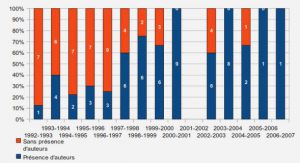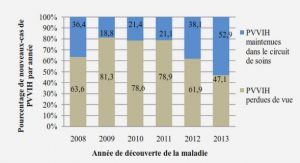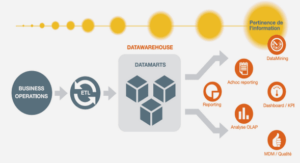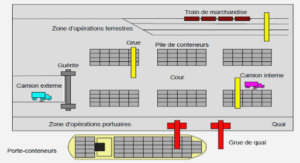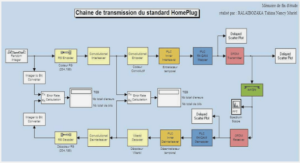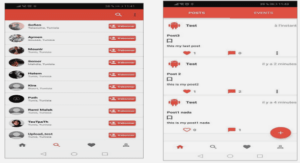Travail par quarts rotatifs
Chapitre 2: Article 1 – Capturing the dynamic nature of workload: An integrative model
Résumé en français
La conceptualisation courante du phénomène de « charge de travail » se caractérise par de nombreux angles morts conceptuels, empiriques et méthodologiques. Afin de combler ces lacunes, cet article vise à répondre à la question de recherche suivante: Comment la charge de travail peut-elle être comprise de manière à refléter sa nature dynamique et fluctuante? Plus précisément, le modèle proposé regroupe deux domaines de recherche, à savoir le modèle de remodelage de poste (job crafting) avec les concepts et méthodes ergonomiques de l’analyse de l’activité, afin de proposer un modèle dynamique de compréhension de la charge de travail. Ce modèle prend en compte la nature constamment évolutive de la charge de travail et les interrelations dynamiques entre les éléments de l’activité de travail. Ce modèle souligne également la nécessité de mettre en place des méthodologies qualitatives ou mixtes pour illustrer la diversité des stratégies de remodelage de poste des employés et ses différentes répercussions. Des recherches futures pourraient déployer ce modèle dynamique dans les services d’urgence, bien connus pour leurs multiples niveaux de charge de travail extrêmes vécus lors de courtes périodes de temps : des stratégies diversifiées doivent y être mises en œuvre pour s’adapter à des charges de travail fluctuantes et imprévisibles.
Abstract
Current workload understanding is characterized by numerous conceptual, empirical and methodological “blindspots”. To fill this knowledge gap, this article aims to answer the following research question: How can workload be understood in a way that reflects its dynamic and fluctuating nature? Specifically, this paper brings together two fields of research, namely job crafting, as framed in the Job Demands-Resources Model, and ergonomic concepts and methods concerning activity analysis, to propose a dynamic model of workload understanding. This model captures the constantly fluctuating nature of workload and the dynamic interrelations between elements of work activity. It also highlights the need for in-depth methodologies to illustrate the diversity of employees’ workload crafting strategies, along with the repercussions of this process on workload interpretation, and the positive and negative consequences on individual well-being and organizational performance. Further research could extend this dynamic model to emergency services, which are well-known for their multiple levels of extreme workload in short time spans: these services must implement diversified strategies to adapt to fluctuating workloads.
Context
Workloads have often been studied as a stable dimension of work. Reality, however, is often very different. Regehr & Bober (2005) illustrate an example of such conditions where a police officer describes his work as “two hours of boredom followed by two minutes of sheer terror and three hours of writing the incident report.” This article aims to provide a more dynamic conceptualization of workload that can illustrate such variable work conditions. Specifically, this paper bridges two complementary fields to enhance our understanding of the dynamic nature of workload: job crafting, as defined in the framing of the Job Demands-Resources Model (Bakker & Demerouti, 2006; Tims & Bakker, 2010; Tims, Bakker, & Derks, 2013), will be integrated with models and methodologies stemming from the French ergonomists’ approach to work activity (Daniellou, 2005; Fournier et al., 2013). An integrated model and methodology results from this bond and represents a contribution to a more dynamic understanding of workload.
Understanding workload is a popular topic in current management research and in occupational health psychology, where workload is frequently cited as one of the main stressors, such as in Karasek’s model of job demands, and any other study on work intensification (Ballet & Kelchtermans, 2008; Ford & Jin, 2015; Tan & Netessine, 2014). Attempts to grasp this phenomenon have stemmed from a variety of disciplines, using numerous definitions, models and methodologies (Bowling, Alarcon, Bragg, & Hartman, 2015; Bowling & Kirkendall, 2012). Despite this rich literature spanning more than fifty years, researchers still have not reached a consensus on a model that illustrates the complexity of workload. For instance, workload has been studied as physical or cognitive dimensions, as overload or boredom, as objective or subjective states or processes, and as either a stand-alone concept or as part of a bigger construct (de Waard & Lewis-Evans, 2014; Hart & Staveland, 1988; Meshkati, 1988; Spector & Jex, 1998). There are apparently as many ways to capture the nature of workload as there are researchers in this field. This lack of a unifying approach to illustrate workload has engendered growing criticism in the scientific community; some academics have even questioned the relevance of investigating workload (de Winter, 2014). We argue that a broader conceptual approach is needed to fully grasp the impact of workload on job stress and well-being (Bowling et al., 2015). Indeed, studies have not taken into account the dynamic and fluctuating nature of workload (Carsten, 2014). Further, they exclude notions of other levels of workload such as underload and boredom (Wood, Michaelides, & Totterdell, 2013); rarely consider the active role of workers in crafting their workloads (Tims & Bakker, 2010); and tend to measure workload using inadequate methods (de Waard & Lewis-Evans, 2014).
As Carsten (2014) contends, the biggest limitation of current workload models is that they do not consider the fundamentally dynamic nature of workload. He highlights that most individuals experience frequent “variations over time,” or fluctuations, in most professions and organizations. However, some professions are intrinsically more affected by these shifts. Chief among these are emergency workers (policemen, firefighters, paramedics) and military services, that are in constant flux concerning their daily demands and resulting workload (Regehr & Bober, 2005; Regehr et al., 2003). Unforeseen life-threatening tasks with a high-level of stress frequently occur between long waiting periods and produce an unusual duality (Lusa et al., 2002). A typical work shift for emergency services is first devoted to benign tasks that support the technical core of the organization in predictable contexts (Colquitt et al., 2011). Yet the pace of these jobs is also punctuated by intense tasks related to the main function of emergency intervention; it inevitably occurs under more complex and unpredictable circumstances (Malek et al., 2010). This constant uncertainty is not necessarily negative; the excitement of rapidly changing situations attracts many individuals to emergency services. These extreme variations have rarely been studied in the context of emergency services despite their high relevance for the stress and well-being literature.
Workload research is heavily polarized toward the study of work overload. While many studies have established the harmful impacts of work overload on workers’ health and safety (Guastello et al., 2014; Guastello, Shircel, Malon, & Timm, 2015; Wood et al., 2013) and on organizational performance (Bowling et al., 2015; Moen, Lam, Ammons, & Kelly, 2013; Tan & Netessine, 2014), far fewer studies have investigated the repercussions of low workload. Work underload was considered relevant in early workload research (Fisher, 1993; Fisher, 1998; Frankenhauser & Gardell, 1976), but it is now increasingly investigated as a repercussion of boredom in the workplace. Defined by Mikulas & Vodanovich (1993) as an aversive subjective state of low arousal and dissatisfaction attributed to an inadequately stimulating environment, boredom has been notably linked to low job satisfaction, work strain, decreased performance, counterproductive work behaviors, work-related accidents and staff turnover (Guglielmi et al., 2013; Harju et al., 2014; van Tilburg & Igou, 2012). Regardless of the significance of these consequences, several researchers have discussed the overall neglect of the phenomenon of work boredom by current management research (Mael & Jex, 2015; Pekrun, Goetz, Daniels, Stupnisky, & Perry, 2010). Many workers presumably experience periods of work underload and work overload, exposing them to the harmful consequences of both extremes. Workload is therefore much more diversified than simply work overload (Wood et al., 2013). However, going from a work overload perspective to a wider conception of this phenomenon imply a greater complexity and requires a conceptual shift. Understanding workload must consider this phenomenon as a continuum in order to adequately implement interventions that foster workers’ health and safety and promote organizational performance (Carsten, 2014).
Third, attitudinal and perceptual aspects of workload highlight the active role of individuals in adapting and crafting their own workload relative to other work dimensions. Job crafting, or “the ways in which employees take an active role in initiating physical or cognitive changes to the way in which they approach their work” (Grant & Ashford, 2008, p. 5) is increasingly studied in the context of workload (Petrou, Demerouti, Peeters, Schaufeli, & Hetland, 2012; Tims & Bakker, 2010; Tims, Bakker, & Derks, 2012; Tims et al., 2013). However, in most job crafting research, workload is defined in the theoretical frame of the Job Demands-Resources model, in which it is synonymous with high job demands (Bakker & Demerouti, 2006). Numerous studies have highlighted that workload represents a process that goes beyond the quantity or pace of job demands (Falzon & Sauvagnac, 2004; Fournier et al., 2013). Therefore, recent studies using job crafting that measure the dynamic and changing nature of workload are limited both theoretically and methodologically because the main methods are questionnaires, which have a limited capacity to capture adapted strategies in fluctuating work conditions (Briner, Harris, & Daniels, 2004; Daniels, 2006).
Finally, even though most workload research recognizes, in theory, that this phenomenon is dynamic, most measures evaluate workload as a fixed state, or as a central tendency, as suggested by Carsten (2014). Current workload research tends to measure workload as a static aspect, even when measures are multifaceted, as in the NASA-TLX (Hart & Staveland, 1988). These measures evaluate the quantity or the complexity of current workload, or reduce perceived workload to an average over a predetermined period. Neither measurement approach accurately represents individuals’ workload (de Waard & Lewis-Evans, 2014). Measurement of a fixed state may take a picture of a single moment that may not accurately depict work the following day or month (de Winter, 2014; Rubio-Valdehita, Díaz-Ramiro, Martín-García, & Puente, 2004), whereas measuring a central tendency flattens experiences of extreme states and ignores the effects of repetitive fluctuations (Carsten, 2014). Current tools and questionnaires thus fail to capture how workload is perceived by individuals, and subsequently paint a real ongoing portrait of workload in an organization (Daniels, 2006).
In line with de Waard and Lewis-Evans (2014) and Carsten (2014), this article proposes that workload is dynamic and fluctuating, and that it should be studied using a broader conceptualization and adapted methods in order to increase our understanding of real-life work circumstances and workers’ perceptions. Accordingly, the research question is: How can workload be conceptualized in a way that reflects its dynamic and fluctuating nature? To answer this question, this article aims to bridge two complementary fields to enhance our understanding of the dynamic nature of workload: job crafting, as defined in the framing of the Job Demands-Resources Model (Bakker & Demerouti, 2006; Tims & Bakker, 2010; Tims et al., 2013) will be integrated with models and methodologies stemming from the French speaking ergonomists’ approach to work activity (Daniellou, 2005; Fournier et al., 2013). The present framework adds to current knowledge on workload by notably bringing together two approaches that are generally not seen as compatible due to paradigmatic differences (Tashakkori & Teddlie, 2010). We attempt to reconcile these differences by demonstrating how the two approaches can enhance our comprehension of the dynamic nature of workload and its evaluation methods.
Two Contrasting Workload Perspectives
Job Crafting in the Job Demands-Resources Model
Individuals are not passive receptacles of their assigned workload. On the contrary, they actively apply strategies to control aspects of their workload and enhance their well-being at work (Tims et al., 2013). Wrzesniewski & Dutton (2001) first devised the notion of job crafting as a term that captures “the actions employees take to shape, mold and redefine their jobs” (p. 180) to align them with their own preferences and motives. This definition has been criticized as focusing only on “those changes that employees may make in their work tasks, relationships at work, and cognitions about work” (Tims et al., 2012, p. 174). To capture a larger group of job characteristics upon which workers may act, recent research has framed the notion of job crafting inside the Job Demands-Resources Model (Bakker & Demerouti, 2006; Tims & Bakker, 2010; Tims et al., 2013), in which it is defined as “the changes that employees may make to balance their job demands and job resources with their personal abilities and needs” (Tims et al., 2012, p. 174). Such a definition includes a larger and more adaptable variety of elements on which employees can focus, consistent with the general objective of the JD-R Model of being adjustable to characteristics of professions and organisations (Bakker & Demerouti, 2006).
The Job Demands-Resources Model
The JD-R model proposes that workers’ well-being is related to a wide range of workplace characteristics that can be classified into two overarching categories. The first category comprises job demands, which involve effort and are therefore associated with physiological and psychological costs such as fatigue and strain. The second category comprises job resources, which represent health-protecting factors such as support, latitude and rewards (Bakker & Demerouti, 2006; Bakker, van Veldhoven, & Xanthopoulou, 2010). According to the JD-R model, demands and resources are involved in two different processes related to job strain and motivation. The health impairment process claims that poorly designed jobs or chronic job demands drain employees’ mental and physical resources and may therefore cause health problems. As in the Job Demands-Control Model (Karasek & Theorell, 1990a), conditions where job demands are high and job resources are low usually induce the highest levels of job burnout (Demerouti, Mostert, & Bakker, 2010; Schaufeli, Bakker, & Van Rhenen, 2009). The second process, motivational in nature, states that job resources may favor work engagement, because they are essential for dealing with job demands and for achieving work goals. Job resources consequently reduce the impact of high job demands on workers’ well-being and productivity (Guglielmi et al., 2013). The JD-R is increasingly dominant in the management literature because it allows researchers to adapt demands and resources to the characteristics of professions and organizations.
Job crafting, in the JD-R framework, is generally measured with the Job Crafting Scale (JCS). It includes four dimensions: 1) increasing structural job resources; 2) increasing social job resources; 3) increasing challenging job demands; and 4) decreasing hindering job demands (Tims et al., 2012, 2013). The first three dimensions have been linked to higher work engagement and other positive outcomes (Bakker et al., 2010; Halbesleben, 2009; Halbesleben et al., 2006; Tims et al., 2013), whereas the fourth dimension, decreasing hindering job demands, is associated with cynicism, withdrawal and disengagement from work. Therefore, engaging in job crafting may not always result in positive individual and organizational outcomes, and depends instead on individuals’ motives to adapt their work activity (Tims et al., 2012, 2013). The nature of the JCS and the items of its subscales, as stated on the criticism of workload, do not explain fluctuations in daily activities. The items of each subscale evaluate work over an indeterminate period, which, as Carsten (2014) states, may represent either average or maximum perceived demands. This judgment might differ between individuals. This paper aims to capture the dynamic nature of workload and broaden its conceptualization beyond work overload by considering other dimensions such as fluctuating demands and workplace boredom (Mael & Jex, 2015). The dimensions of job crafting and of the J-DR models are highly relevant to this objective, yet we argue that the methods used to measure the constructs do not adequately consider the dynamic and fluctuating nature of workload.
Workload in the JD-R model represents a part of job demands, either seen as a qualitative aspect, where it corresponds to the difficulty of the task, or a quantitative aspect, related to the amount and pace of work (Bakker & Demerouti, 2006; Boyd et al., 2011). This model does not clarify the conceptual difference between workload and the quantity and difficulty of demands, which are synonymous in this perspective. As defined above, workload is a more complex process that is highly dynamic and perceptual, and the quantitative approach used with the JCS does not clearly highlight dimensions of work overload, work underload and the fluctuations between these two states. While the JCS investigates if employees use certain strategies affecting demands and resources, it does not investigate why and how. In the firefighting profession, for example, the JCS item “I try to learn new things at work” may be associated with increasing structural job resources to improve performance in extinguishing fires, but may also represent a strategy to alleviate boredom during long wait periods between calls. Understanding the active role of individuals take in shaping their work lives is an essential part of a different perspective on work activity, namely the French-speaking ergonomists’ approach (Daniellou, 2005). This perspective is supported by a precise methodological approach that could make an interesting contribution to job crafting as conceptualized by Tims et al. (2012).
The French-speaking ergonomists’ approach to work activity
Ergonomics cover a very diverse area of inquiry. In this article, this field will be divided into two distinct streams of research. The first relates to “human factors,” and is defined as a “field of study focused on designing a system that fits the needs, abilities, and limitations of those working in the system and reducing hazards in order to improve quality and safety” (Chui, Look, & Mott, 2014, p. 329). The second stream, newer and mostly French-based, considers ergonomics as the overall analysis of work situations with the objective of improvement (Darses & de Montmollin, 2006); we will use the term ergonomics to refer to this trend in the rest of the paper. Using specific methods, ergonomists in this stream study individuals in real-life settings, facing constraints related to their tasks, resources and work organization, in order to identify what should be done to improve their working situation and how (Lamonde & Montreuil, 1995). Ergonomic methods can be quantitative, qualitative or mixed, in order to make an accurate diagnostic of the most relevant work issues for employees as they are manifested and perceived in their own context. Ergonomics thus diverges from the more positivist approach of stress models such as the JD-R, and are more closely related to a pragmatist perspective in which any method is appropriate as long as it serves the research purpose and objectives (Feilzer, 2010; Johnson & Onwuegbuzie, 2004; Tashakkori & Teddlie, 2010).
Workload in ergonomics is defined as a process, and is divided into sub-dimensions. As a process, workload generally refers to the level of requirements of a task at a given time and the consequences of this task when completed (Cazabat, Barthe, & Cascino, 2008). Consequences on the psychological or physical health of the individual occur over the short, medium or long term (Spérandio, 1972).
Requirements can be of various kinds: physical, cognitive, social or organizational. Resources supplement ergonomic definitions of workloads: in addition to being assets that employees can use, they also represent the procedures that individuals can put in place to meet their tasks’ requirements (Falzon & Sauvagnac, 2004; Spérandio, 1972). The process of workload is fundamentally dynamic owing to the insertion of “regulation loops” in ergonomic models (Cazabat et al., 2008; Spérandio, 1972). When the level of task requirements is low, individuals have the resources and latitude to use complex procedures to complete their assignments. As the levels of requirements rise, consequences also increase until they reach a critical threshold that results in the implementation of a simpler procedure that decreases the perceived costs of the tasks (Poete & Rousseau, 2003; Spérandio, 1972). This process continues with each increase in the level of requirements until no simpler procedures can be applied. Detrimental effects such as stress, fatigue, cardiovascular disease and burnout then appear (Cazabat et al., 2008; Falzon & Sauvagnac, 2004).
Ergonomic models of workload typically divide this phenomenon into three interrelated sub-dimensions (Poete & Rousseau, 2003). First, prescribed workload refers to the official requirements of the work activity in terms of organizational tasks and roles, and more generally the official description of a given job (Darses & de Montmollin, 2006; de Montmollin, 1986). The second sub-dimension is the actual workload, which refers to workers’ activity and to what individuals do concretely to fulfill the requirements of the prescribed workload in a specific context, given the resources and strategies available (Falzon & Sauvagnac, 2004; Fournier et al., 2013; Lamonde & Montreuil, 1995). Finally, the experienced workload represents the feeling of burden caused by the level of workload (Fournier et al., 2010). Prescribed workload generally corresponds to the concept of job demands in organizational health psychology, whereas perceived workload can be related to the consequences of these models. Actual workload, with the integration of strategies and regulation loops to make resources fit task levels, can be related to job crafting. However, the methodologies used to access these constructs differ greatly between ergonomics and organizational psychology. Ergonomics favors in-depth qualitative approaches (Daniellou, 2005; Guérin, Daniellou, Duraffourg, & Rouilleault, 2006) whereas organizational psychology relies mainly on self-report scales (Tims et al., 2012, 2013).
Ergonomics considers that it is not optimal to deal with issues of occupational health simply by understanding it through the formal description of the tasks or referring only to management opinions (Daniellou, 2005). A fine understanding of the difficulties that employees encounter at work and of the actions they take to cope with variations allows one to identify the factors that influence the activity, the characteristics of the activity and its individual effects and organizational outcomes (Darses & de Montmollin, 2006). Further, ergonomics methods underline the importance of internal structuring of activity; they base their diagnosis not only on the observable conduct of individuals, but also on the individuals’ construction of meaning of the activity (Amalberti, 1991; Theureau, 2002). As such, activity analysis in this field uses a variety of methods such as observation (participant or other), interviews, activity chronicles, ethnographies and questionnaires to fully illustrate the work activity with all its variations (Rabardel, 2002).
|
Table des matières
Chapitre 1 : Problématique de recherche
1.1 Introduction
1.2 Culture organisationnelle
1.2.1. Héritage militaire
1.2.2 Nouvelle gestion publique
1.3 Risques organisationnels associés aux interventions des pompiers
1.3.1 Risques à la santé physique
1.3.2 Risques à la santé psychologique
1.4 Risques organisationnels associés à l’activité globale des pompiers
1.4.1 Le manque de leadership des officiers des services de prévention des incendies
1.4.2 La faible cohésion des équipes de travail
1.4.3 Travail par quarts rotatifs
1.4.4 Fluctuation imprévisible entre états extrêmes
1.4.5 Synthèse
1.5 Lacunes théoriques et empiriques
1.6 Confrontation avec la réalité du terrain
1.7 Objectifs
1.7 Références
Chapitre 2: Article 1 – Capturing the dynamic nature of workload: An integrative model
Résumé en français
Abstract
2.1 Context
2.2 Two Contrasting Workload Perspectives
2.2.1 Job Crafting in the Job Demands-Resources Model
2.2.3 Synthesis
2.3 Proposition for a Dynamic Framework of Workload Understanding
2.3.1 Prescribed workload
2.3.2 Actual workload
2.3.3 Experienced workload
2.4 Discussion
2.4.1 Implications for practice
2.5 Conclusions
2.6 References
Chapitre 3: Méthodologie
3.1 Propositions de recherche
3.2 Approche de recherche
3.2.1 Interprétativisme et pragmatisme
3.2.2 Ethnographie
3.2.3 Ergonomie et analyse de l’activité
3.3 Collecte de données
3.3.1 Terrain de l’étude
3.3.2 Déroulement
3.3.3 Fin de la collecte : sortie du milieu d’étude
3.4 Éthique à la recherche
3.5 Analyse des données
3.5.1 Transcription
3.5.2 Double analyse qualitative
3.6 Aperçu des chapitres suivants
3.7 Références :
Chapitre 4: Article 2 – Waiting for action: A dynamic study of workplace boredom in firefighting
Résumé en français
Abstract
4.1 Context
4.2 Workplace Boredom
4.3 A Dynamic Framework of Workload Understanding
4.3.1 Prescribed workload
4.3.2 Actual workload and job crafting
4.3.3 Experienced workload and consequences
4.4 Method
4.4.1 Ethnography
4.4.2 Data collection
4.4.3 Data analysis
4.5 Results
4.5.1 Job demands: Nature of clean work in firefighting
4.5.2 Environmental and organizational conditions
4.5.3 Job resources
4.5.4 Job Crafting
4.5.5 Risks of workplace boredom in firefighting
4.6 Discussion
4.6.1 Implications for practice
4.7 Conclusion
4.7.1 Future Research
4.7.2 Limits
4.7.3 Ethics
4.8 References
Chapitre 5: Vers une compréhension dynamique de la charge de travail : Application au métier de pompier
Résumé
5.1 Mise en contexte
5.2 Un modèle dynamique de compréhension de la charge de travail
5.2.1 La charge prescrite
5.2.2 Charge réelle
5.2.3 Charge vécue
5.3. Méthodologie
5.3.1 Ethnographie
5.3.2 Collecte de données
5.3.4 Analyse des données
5.3.5 Éthique
5.4. Résultats
5.4.1 Facteurs de variation de la perception de la charge de travail
5.4.2 Effet régulateur des stratégies de remodelage de poste envers la perception de la charge de travail
5.5. Discussion
5.5.1 Contributions théoriques et empiriques
5.5.2 Contributions méthodologiques
5.5.3 Contributions pratiques
5.5.4 Limites
5.6. Conclusion et recherches futures
5.7 Références
Chapitre 6 : Conclusion générale
6.1 Résumé des résultats de l’étude
6.2 Contributions théoriques et empiriques
6.3 Contributions méthodologiques
6.4 Contributions pour la pratique
6.4.1 Contrôler l’imprévisibilité : Une gestion flexible de la charge de travail des pompiers
6.4.2 Dynamiser le travail « propre » : Éviter l’inertie au travail à tout prix.
6.4.3 Former et soutenir : Encadrement et engagement de la haute direction
6.5 Limites et recherches futures
6.6 Références
7. Références
Annexes .
![]() Télécharger le rapport complet
Télécharger le rapport complet

